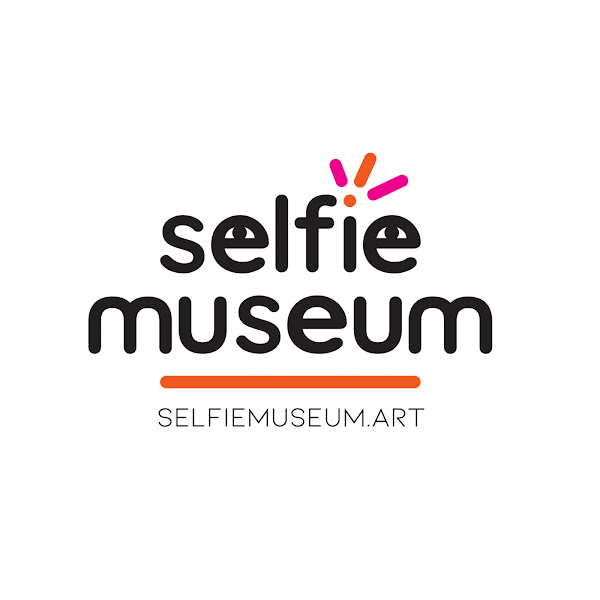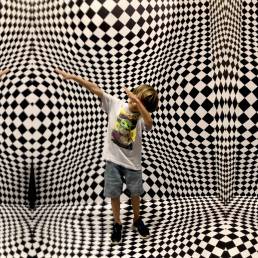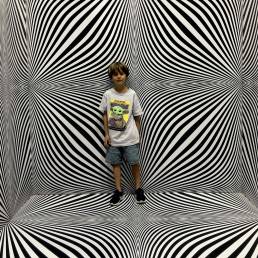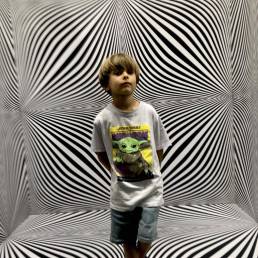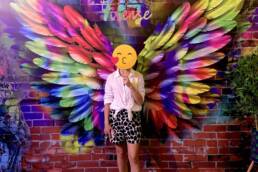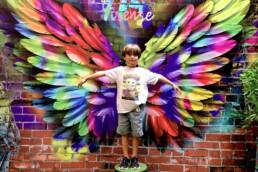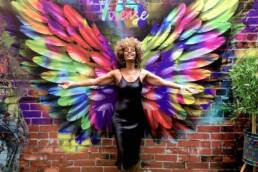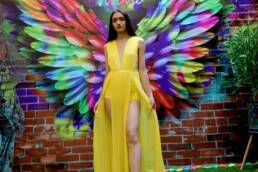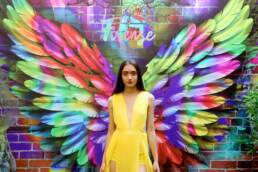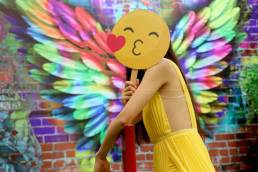STEFANO FAKE, “IMMERSIVE OPTICAL ROOMS” (2002 > today)
STEFANO FAKE pays homage to the optical art developed in the period 1960-1970 by legendary artists such as Victor Vasarely, Bridget Riley, Jesus-Rafael Soto, Richard Joseph Anuszkiewicz, Omar Rayo Reyes, Jean-Pierre Vasarely, Marina Apollonio, Edna Andrade, Ludwig Wilding, Alejandro Otero, Michael James Kidner, Kazys Varnelis, Antonio Asis, Miroslav Sutej. FAKE reinterprets the geometric transpositions of tradition, invading the spaces around the visitor, who finds himself immersed in vibrant and visually exciting room.
STEFANO FAKE transforms rooms with hypnotic installations featuring optical illusions. Considered a pioneer in the field of computer-generated art and immersive installations, Stefano Fake’s career spans over 25 years. His room installations explore concepts like modularity and repetition, altering the visitor’s perspective of architecture which is the primary medium of his art. By using hypnotizing optical designs, FAKE tackles the viewer’s perception. Set upon the walls, floors and ceilings, the geometric black and white patterns create a feeling of undefined movement.
STEFANO FAKE rende omaggio all’arte ottica sviluppata nel periodo 1960-1970 da artisti leggendari come Victor Vasarely, Bridget Riley, Jesus-Rafael Soto, Richard Joseph Anuszkiewicz, Omar Rayo Reyes, Jean-Pierre Vasarely, Marina Apollonio, Edna Andrade, Ludwig Wilding, Alejandro Otero, Michael James Kidner, Kazys Varnelis, Antonio Asis, Miroslav Sutej. FAKE reinterpreta le trasposizioni geometriche della tradizione, invadendo gli spazi attorno al visitatore, che si ritrova immerso in ambienti vibranti e visivamente stimolanti.
Stefano Fake trasforma le stanze con installazioni ipnotiche caratterizzate da illusioni ottiche. Considerato un pioniere nel campo dell’arte generata al computer, la carriera di Stefano Fake dura da oltre 25 anni. Le sue installazioni in camera esplorano concetti come modularità e ripetizione, alterando la prospettiva dell’architettura del visitatore che è il mezzo principale della sua arte. Utilizzando linee ipnotizzanti, FAKE affronta la percezione dello spettatore. Applicando pattern geometrici su pareti, pavimenti e soffitti, FAKE attiva nell’occhio visitatore una sensazione di movimento indefinito.
—–
FAKE 重新诠释了传统的几何变换,侵入了游客周围的空间,他们发现自己沉浸在充满活力和视觉刺激的房间中。
Stefano Fake 使用具有视觉错觉的催眠装置改造房间。 Stefano Fake 被认为是计算机生成艺术领域的先驱,其职业生涯跨越了 25 年。他的房间装置探索了模块化和重复等概念,改变了参观者对建筑的看法,而建筑是他艺术的主要媒介。通过使用迷人的线条设计,FAKE 解决了观众的感知问题。设置在墙壁、地板和天花板上的线条——主要是黑色和白色——营造出一种不确定的运动感。
